TEN POINTS ROADMAP: MARKETING & BRANDING DURING & BEYOND COVID TIMES
We are in unforeseen times and no person alive on this planet has personally faced this situation unleashed by the nCOVID19 pandemic and the lockdowns announced globally thereafter. Hence, the response with regards to understanding consumer behaviour and responding with right marketing and branding strategies also have to be novel, experimental and nimble, changing as per the evolving situation. There also have to be different approaches for the immediate fluid situation of the pandemic, the next phase of recovery say over the next 3 to 6 months, and then over the next two years which can be called the New Normal.
In a crisis there is always a seed of an opportunity, and the attempt here is to find the possible opportunities. We must always remember that ‘Black Swan’ moments may break a brand, but can also make it. There will be post COVID world too, but it might be qualitatively a different place, with a New Normal. The key is in being prepared, managing all diversity in the market-place, and having a continuously evolving strategy without being stuck up with pre COVID experiences.
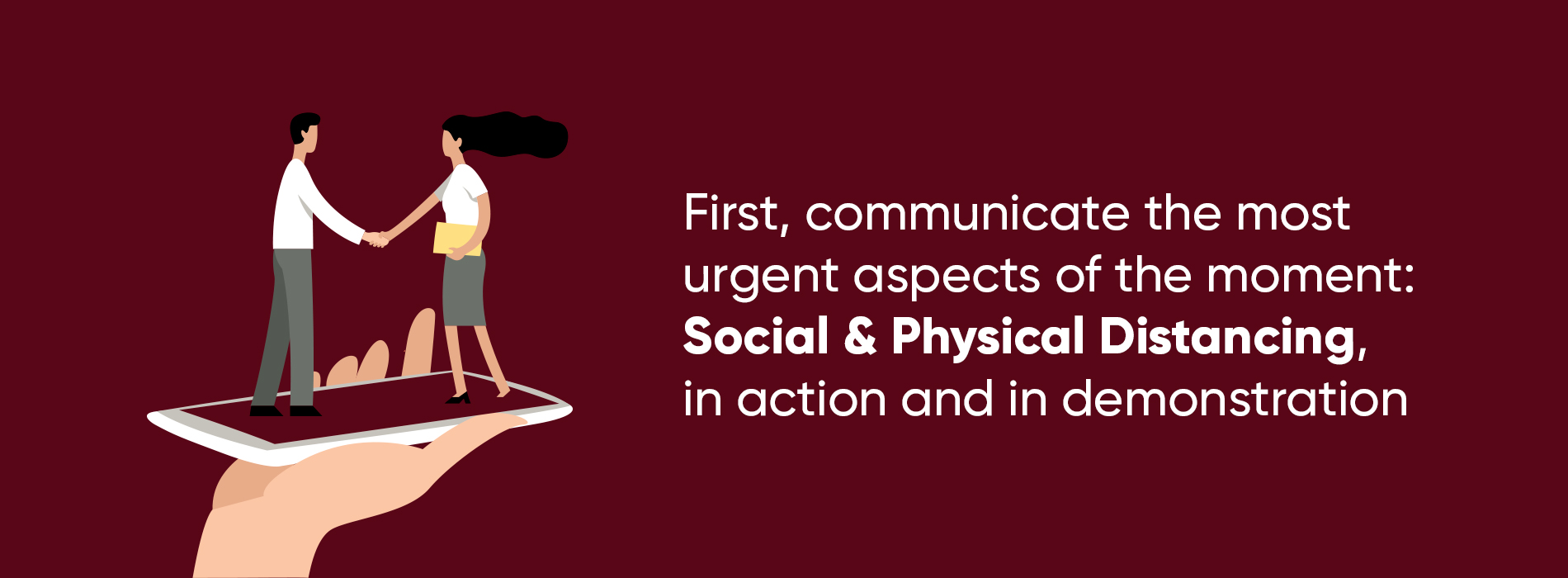 For the immediate during-pandemic response, the brands need to think like a customer and try to assess the emotional upside they may be experiencing in these turbulent times. Also, they need to communicate the most important messages of the moment. McDonald has separated the two arches and Pidilite (Fevicol) has distanced its two elephants in the logo, both signalling the importance of social or physical distancing today.
For the immediate during-pandemic response, the brands need to think like a customer and try to assess the emotional upside they may be experiencing in these turbulent times. Also, they need to communicate the most important messages of the moment. McDonald has separated the two arches and Pidilite (Fevicol) has distanced its two elephants in the logo, both signalling the importance of social or physical distancing today.
Brands should craft messages that are laden with value-oriented and compassionate themes. For instance, brands like Volkswagon are glorifying Corona warriors by highlighting their stories. Taj, Oberoi hotels and Oyo Rooms in Delhi have opened up their doors for the doctors and health-workers to stay during the health emergency when hospitality industry also slumped.
A recent research by Ogilvy suggests that brands that come up with right marketing and branding strategies and newer products and services during crisis times are able to garner up to three times more market share through a downturn. For example, Emami forays into hand sanitizer segment with an opportunity to experiment, Byju’s and Zoom are communicating with newer services at a breakneck pace, etc.
In this acute pandemic phase, brands must sustain short term sales by re-allocating spend behind the most topically relevant segments; and spend smarter with more for less being the goal. They must leverage data analytics for full funnel optimization & fix weak links. optimise drive-to web, drive-to-commerce, make online visibility and transaction easier. Brands also need to explore possibilities to reach those who are beyond the digital divide as well, especially for essential products, and that is a tough mandate indeed.
Today, as the pandemic unfolds, brands like those in heath, food delivery, supplying essentials etc strongly need to convey how they are serving without spreading virus. Brand actions to matter right now will be those which create meaningful action and support for public health and safety. Unilever utilised livestream to connect with scientists and medical professionals to educate consumers on key points of daily protection. In doing so the company shifted focus to a ‘public service’ messaging strategy on the most relevant brands in its portfolio. Baidu map upgraded it’s real-time “epidemic area” in more than 200 cities, helping protect public health and safety. The app pops up a geo- tagged “surrounding epidemic reminder”, showing real-time information such as the number of affected places across the whole city. Recognising that customers were concerned about receiving goods from China, Lazada provided access to infectious disease specialists. Using its in-app livestreaming technology, over 21,000 viewers were connected to raise questions pertaining to the virus from the safety of their homes
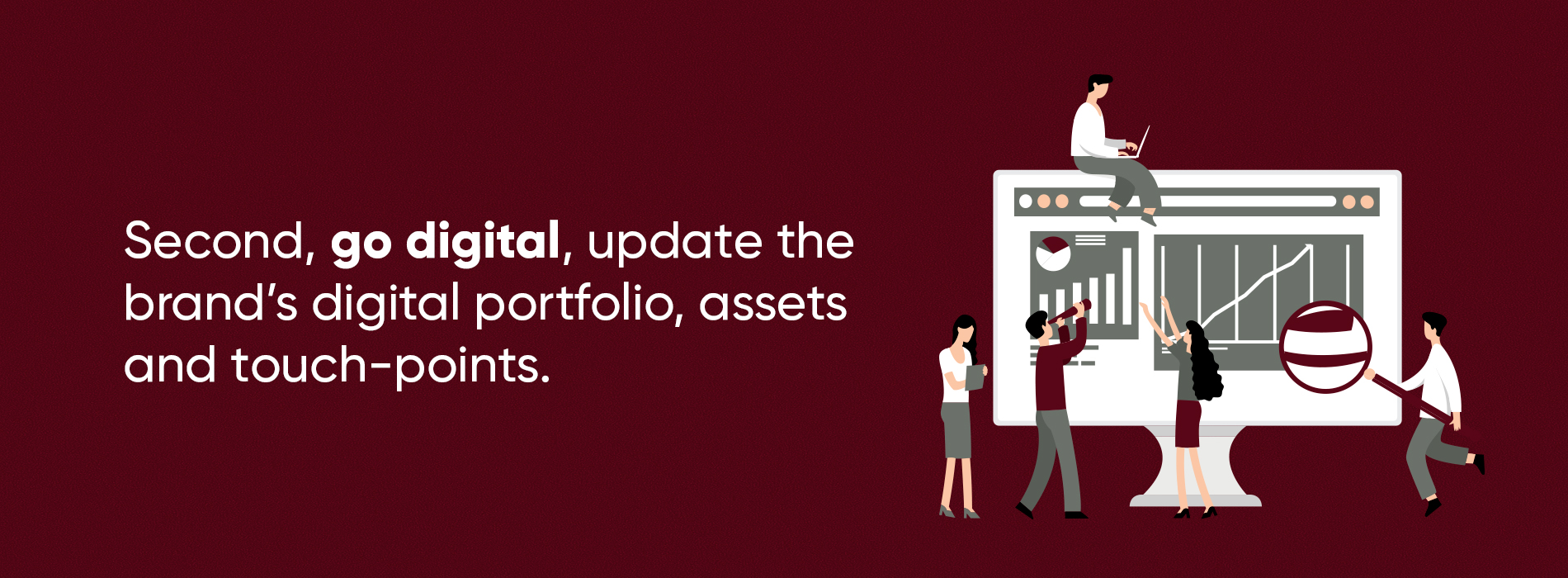 Kantar.com study shows that the consumers in middle to upper classes are now engaged during the lockdown period in activities like consuming long video, short video, sleep, linear TV, mobile/online games, online chat with friends/relatives, online education, cooking/baking at home, offline learning/reading, online entertainment, working out at home, parenting, supervising kids’ study, working from home, live video/livestream, leisure at home, nurture skin and pet time, and the frequency of these being in this order. As we can see most of these are online and digitally driven.
Kantar.com study shows that the consumers in middle to upper classes are now engaged during the lockdown period in activities like consuming long video, short video, sleep, linear TV, mobile/online games, online chat with friends/relatives, online education, cooking/baking at home, offline learning/reading, online entertainment, working out at home, parenting, supervising kids’ study, working from home, live video/livestream, leisure at home, nurture skin and pet time, and the frequency of these being in this order. As we can see most of these are online and digitally driven.
Hence, brands need to resort to social listening, building scenarios as per the changing situation, and having flexi strategy accordingly. Focus has to be on survival and protection of current businesses rather than expansion of operations or higher profits (except a few). Brands can explore opportunities even in times of adversity by strengthening their social media presence. Making an intelligent use of data and analytics would help marketers take evidence-based decisions in the realm of consumer behaviour. Digital persona of the brands becomes a new need, updating Google My Business page, updating the website/portal of the organization, being on social media platforms with engaging content and updating regularly, creating branded content and making them viral digitally, and moving on to eCRM or upgrading the intensity of eCRM resorted to in earlier times.
Understandably, Digital Divide is going to be the major challenge and Digital Access is going to hold the primary key. It is a blessing in disguise as 28 percent of the region’s population is younger than 15 years old. As such, millions of young people of present generation are becoming more and more tech-savvy and they very soon would become the consumers, entrepreneurs, and technicians of tomorrow.
Also, leveraging and unleashing the full potential of e-commerce in the South Asian countries like ours is unarguably going to hold the key to make it a game changing phenomenon. The Covid-19 certainly intensified adoption of digital platforms in every possible aspect of transactions from placing demands, delivery of goods and services and clearing payments. One clear indication of this is the rise in number and volume of transactions on across all e-commerce platforms during last one month.
In the emergent context, the digital marketing apparently has increased potential to track and unearth the psyche of the consumers by leveraging the power of data analytics. Most consumers today are glued to TV, active on social media, and tend to view long videos online. Any data, statistics, and analytics related to consumer home-bound activities, which is Digital Consumer Intelligence (DCI), would provide insights into their changed consumption habits for effective targeting. Let brands use this free time to come up with interactive portals and responsive websites. Social Listening is the larger part of DCI. More personalized content is the need. Consumers frustrated with impersonalized website experiences.
Further, new CRM practices being the way forward, brands like India’s biggest cake brand Monginis coming to every housing society with whatsapp notification with their products are exploring new sales strategies.
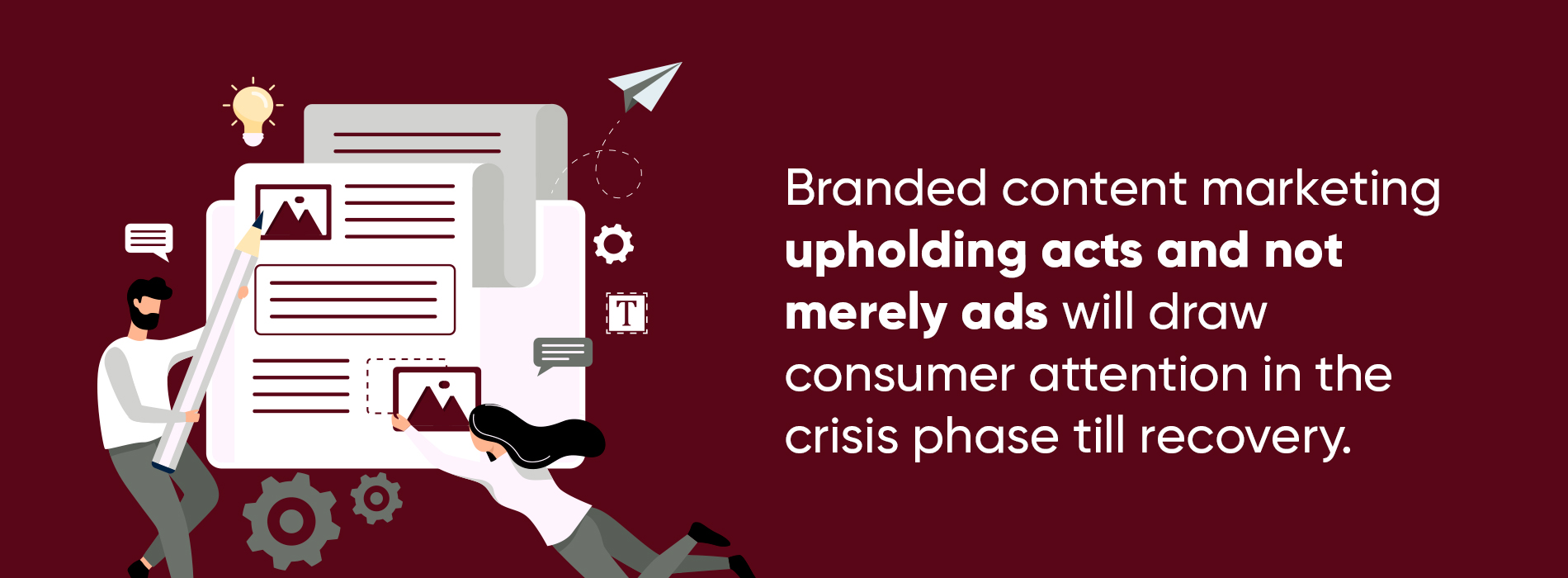 For quite some time clutter of ads on electronic and social media has decreased their efficiency. Now, acts not ads will do the work in brand communication during and immediately after the crisis, like supermarkets are giving health care professionals a dedicated shopping time, furniture brand IKEA making masks and sanitizers and voluntarily closing all of its 50 stores across US to ensure distancing.
For quite some time clutter of ads on electronic and social media has decreased their efficiency. Now, acts not ads will do the work in brand communication during and immediately after the crisis, like supermarkets are giving health care professionals a dedicated shopping time, furniture brand IKEA making masks and sanitizers and voluntarily closing all of its 50 stores across US to ensure distancing.
Videos going viral in social media and on whatsapp is another good route to branding. Short films with branded content keeping consumers apprised of the changes, policies, delays and setting expectations is a good step. Leverage content marketing and just moment marketers. Good examples are of Marriott- Masters of Marriot- Distanced Yet together; OYO Rooms coming out with films promoting social distancing, celebrating CoronaWarrior heroes. Cadbury’s heart-warming video for thanking people for staying at home and promoting connectedness (Every home has a sweet story campaign) or Sunrise Masale in India talking about which spices to put in food to boost immunity.
Brands can also explore how to use influencers in social media marketing. They are key opinion leaders. For example, one can use Tiktok or Instagram leaders with followers to give out social message, which also can be used as ads in OTT programs which are now being consumed more than ever before. Netflix increasing its viewership more than twice in India in April proves the point.
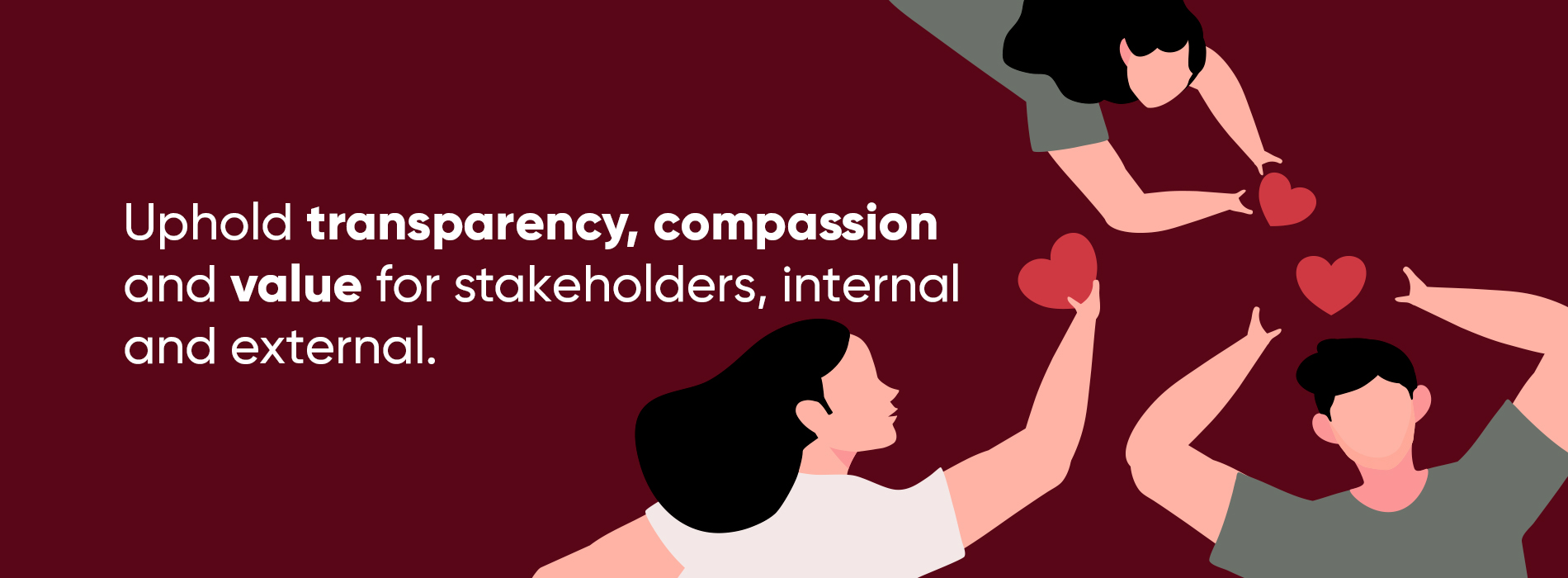 The Ogilvy study prescribes to engage all audiences and stakeholders. Beyond customers /consumers focused communications, brands must carry out stakeholder mapping to consider the needs and concerns of all stakeholders, internal, external, individual and institutional, and leverage social channels for open & real-time response and communication. They must identify opportunities to create ‘shared value’ programs, mobilising and connecting all parties for common benefit.
The Ogilvy study prescribes to engage all audiences and stakeholders. Beyond customers /consumers focused communications, brands must carry out stakeholder mapping to consider the needs and concerns of all stakeholders, internal, external, individual and institutional, and leverage social channels for open & real-time response and communication. They must identify opportunities to create ‘shared value’ programs, mobilising and connecting all parties for common benefit.
Thinking of the internal customers, brands need to reassign their KRAs towards more marketing, and utilize the opportunity to realign skill sets, particularly in digital marketing and eCRM, in times of lockdown and physical distancing.
Compassionate marketing has to be the hallmark of brands’ initiatives today. Catastrophes like these throw open opportunities to corporates to create a positive/favourable corporate image through an altogether different kind of CSR initiatives and other affirmative actions that are socially relevant and beneficial. For example, Bill Gates Foundation has committed an additional $150 million funding with an undertaking to leverage the resources of the foundation for societal welfare and people’s well-being for COVID. Azim Premji, founder of WIPRO India, is the third largest contributor to funds to fight the pandemic.
Even the events and experiential marketing industry, completely devastated now, is preparing for PhyGital (Physical + Digital) experiences going beyond the pandemic, and resorting to digital experiences now to remain relevant and bring value free of cost to their usual patrons.
Restaurants are hit hard too in times of physical distancing and they are reinventing themselves. Already big players like Dominos and McDonald’s have introduced contactless delivery systems. The advertisement by Dominos ‘Great Taste. Delivered safe’, clearly displays their brand-oriented thinking.
Restaurant Brands International, the parent company of Popeyes, Burger King and Tim Hortons have offered bonuses to employees who work in April, despite the outbreak. These restaurant chains are planning to use thermometers to take employees temperatures on a daily basis to make sure they are healthy. The same information can be displayed inside the restaurant premises on a standee, leaflet, table top or through a recorded video to be played in the TV. The premises itself should clearly convey to the consumer that some serious efforts have been undertaken to make it free of virus.
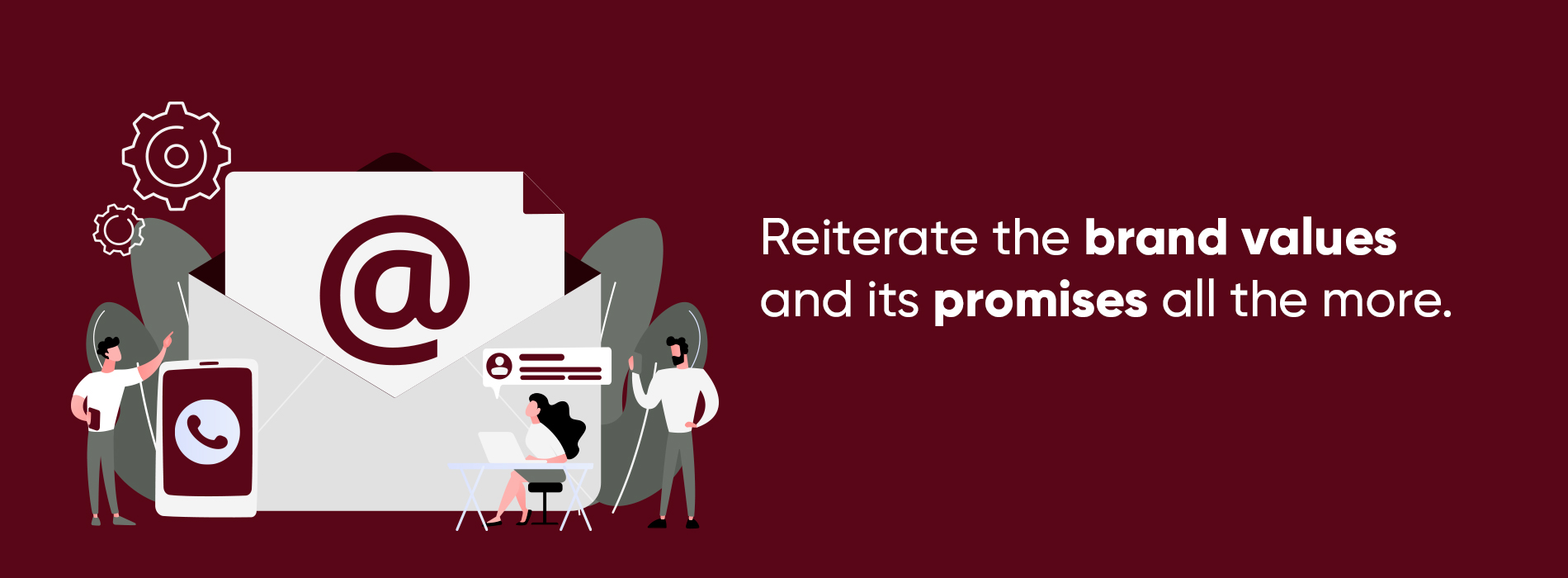 Ogilvy further suggests to activate the brand purpose of values and do more, but say less. Activate brand purpose to support hygiene and virus containment efforts, and keep life (and livelihoods) going – add ‘brand-aligned’ value to people, the community, and broader nation. Not every brand needs to turn ‘caregiver’: support across all needs and emotional need-states, in line with brand benefit and persona.
Ogilvy further suggests to activate the brand purpose of values and do more, but say less. Activate brand purpose to support hygiene and virus containment efforts, and keep life (and livelihoods) going – add ‘brand-aligned’ value to people, the community, and broader nation. Not every brand needs to turn ‘caregiver’: support across all needs and emotional need-states, in line with brand benefit and persona.
Alibaba announced 20 measures to help businesses and merchants in China, which included: reducing operational cost on Alibaba platforms, providing financial support by waiving or lowering interest rates, subsidising delivery personnel and ensuring higher logistics efficiency, providing flexible job opportunities to ensure income, more tools for enterprises to accelerate their digitisation, and remote working management for enterprises.
Bytedance offered all enterprises and organisations in China access to its Feishu remote collaboration platform free of charge. Deliveroo announced a 15-20% discount in commission fees to restaurants to support them as the number of dine-in customers fall, and a delayed commission payment. NetEase Youdao provides Free Online Lecture Service for primary and middle school students who can’t go to school. Under Armour realised remaining healthy in difficult times is important. They shared exercise tips on their official account. Audible.com from Amazon is given free to the children during the lockdown period. Adobe opened up its Adobe Creative Cloud to users free.
KFC introduced special safety measures for instore dining, take-out and delivery services to help keep their customers and staff safe. And to show their appreciation of staff who remained in their posts in critically hit areas, personal stories were shared on social platforms. IKEA leveraged its brand promise of ‘bringing joy into the home’, DIY philosophy and creative cheeky persona, to bring light relief to all those forced to spend Valentine’s day quarantined at home, or even worse, in isolation.
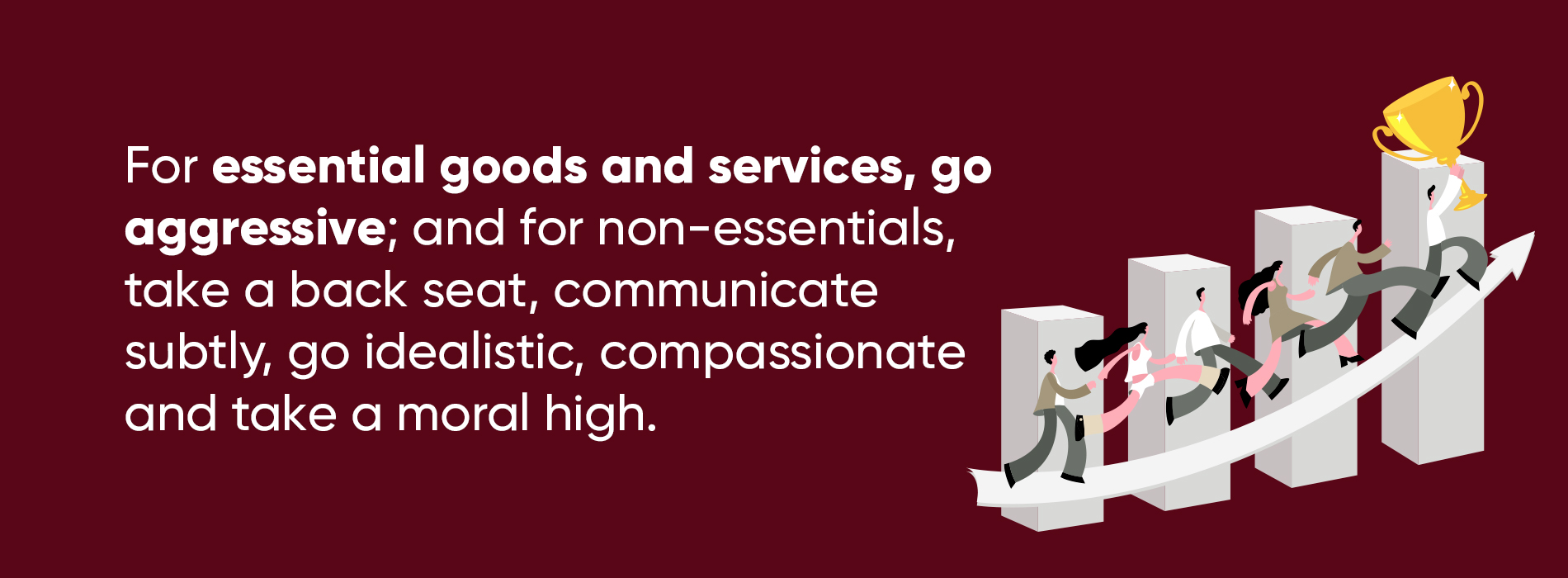 While brands in education, edu-tech, health-tech, food-tech, food items and groceries, and similar other essential ones should go aggressive in marketing spends, though with compassionate messaging, others can go slow focusing more on reaching out and CSR. It is important to creatively and digitally communicate the essential products and services, while others can still communicate less championing causes.
While brands in education, edu-tech, health-tech, food-tech, food items and groceries, and similar other essential ones should go aggressive in marketing spends, though with compassionate messaging, others can go slow focusing more on reaching out and CSR. It is important to creatively and digitally communicate the essential products and services, while others can still communicate less championing causes.
Crisis marketing is going to pose its own set of challenges. While doing nothing or not getting aggressive may sound logical, but companies may risk the chance to rebound after the crisis is over. Customers should feel that companies exist in some form and cares for them. Crisis also provides way for new service models. Crisis provides a real chance to showcase how brands can differentiate themselves.
There are some good international examples of how KFC offered free meals to medical caregivers. Likewise, Ford started some philanthropic activities such as providing money to support food programs for children no longer in school. Another example is of Walgreens promoting pharmacy chats.
H3C donated more than 4M $US of equipment for new hospitals in Wuhan as soon as the crisis started. They also provided digital services for existing hospitals and clients in many provinces outside Hubei and round-the-clock technological support. They are helping to fight the virus with tech. Philips donated over 2M $US of vital medical equipment to Wuhan and helped install the first CT scan in a newly built emergency field hospital (Leishenshan). Gojek Singapore has launched a new initiative called GoHeroes in light of COVID-19. It’s an initiative to support frontline healthcare workers and medical professionals with help also coming from their driver partners.
Brands, alongside its communication, must also protect current marketing channels, supply chain, and alongside create the alternative digital, and for future blended, marketing channels & supply chain.
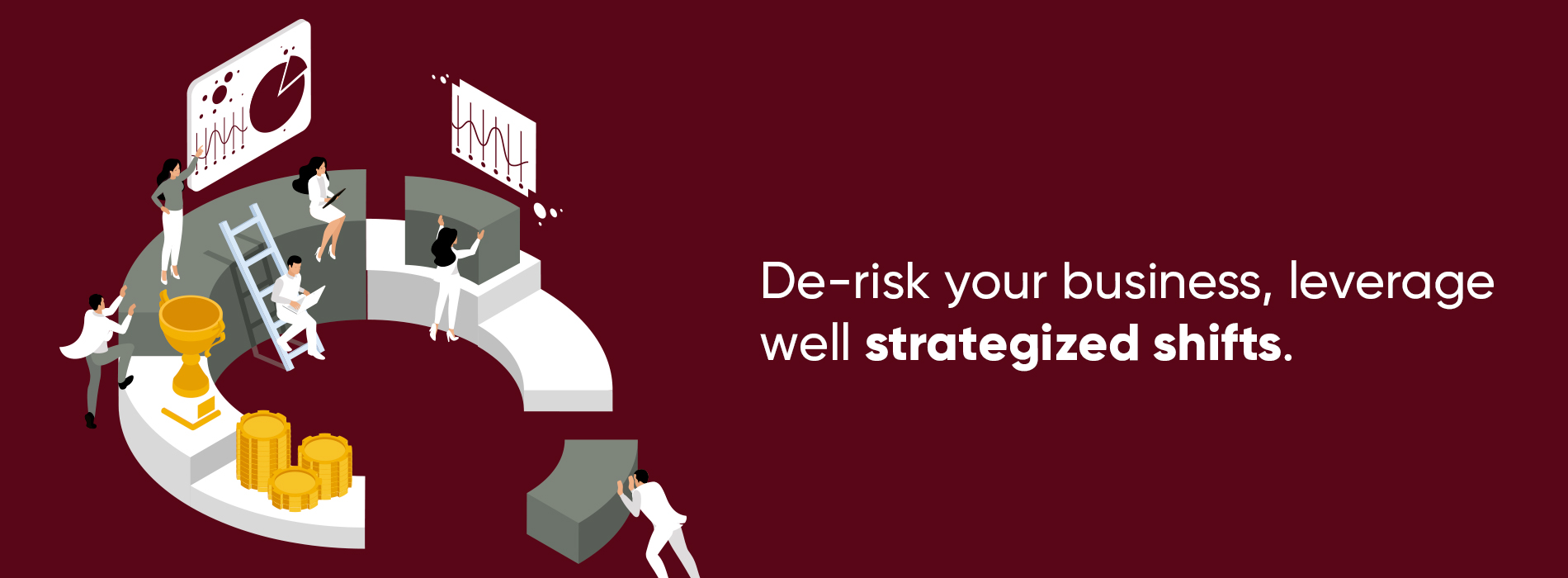 The cardinal principles and fundamental rules of branding and marketing may not outlive their utility in the New Normal, but the domain does definitely assume a new facade, medium, and tone as a key priority. While de-risking one’s business by focussing on the essentials of the consumers and hiving out many functions of the business to outside resources is one need, the other is to leverage well strategized shifts in branding and marketing.
The cardinal principles and fundamental rules of branding and marketing may not outlive their utility in the New Normal, but the domain does definitely assume a new facade, medium, and tone as a key priority. While de-risking one’s business by focussing on the essentials of the consumers and hiving out many functions of the business to outside resources is one need, the other is to leverage well strategized shifts in branding and marketing.
To fuel brand saliency, one needs to sustain spend and earned exposure / talkability to keep brands salient in anticipation of the rebound. IPA data shows brands that sustain exposure throughout a crisis, can increase share 3x during downturns, but also rebound faster and stronger in recovery. Alongside, the brand needs to prime for momentum upon rebound whenever it happens (different months in different nation may be). Identify categories and segments that will most benefit from pent-up demand and economic stimulus. Identify priority parts of portfolio with greatest potential. The brand needs to work with its media agency to re-allocate budgets and secure quality ad stock and leverage CRM and social platforms to activate existing users, and turn new followers into trialists.
The brand also needs to innovate and reshape its portfolio. Leverage data and insights to identify the most significant and lasting shifts. Accelerate claims innovation, product innovation, CX innovation. Consider how to leverage and strengthen Health & Wellness connections, across categories. And, as noted earlier, the brands need to shift towards digital channels and behaviours. Review Customer Engagement & Content plans. Address new needs and priorities in Digital content / Digital services / Utility / Commerce. Leverage martech and automation to enable more personalised and contextual creation and distribution of content in real time.
 The time is now ripe to not just think about or think at in a myopic manner but think beyond the corona pandemic as when the challenges/problems at hand are out of box, the solutions and answers also need to out of box. Research evidences suggest that it takes 66 days for the altered behavioral patterns of consumers to become a new habit. This finding is going to act as a powerful pointer for marketers engaged in designing marketing communication strategies
The time is now ripe to not just think about or think at in a myopic manner but think beyond the corona pandemic as when the challenges/problems at hand are out of box, the solutions and answers also need to out of box. Research evidences suggest that it takes 66 days for the altered behavioral patterns of consumers to become a new habit. This finding is going to act as a powerful pointer for marketers engaged in designing marketing communication strategies
Brands need to study and analyze changing consumer behavior during and after pandemic. Customers during lock down are looking for experiences that are newer and varied to escape inherent monotony of limited social interactions and movements. It is exactly where the creativity and ingenuity of marketers are put to test. Now, they have to discern and uncover ways and means to reach their existing and prospective consumers who are forced to be confined within four walls at least for some more time. The efficacy of all the promotional tools and marketing communications is going to be determined by the level of psychological connect and social bonding of the brands with the consumers, evolving from short-run acquaintance to sustained loyalty in the long run.
Going ahead, post COVID, when the consumers are allowed to pivot from the status quo, they would tend to try out new consumption patterns and test out new things in the altered conditions. For instance, there would be steep spike in demand for newer and emergent teaching-learning processes as both the teachers and the taught are left with no other choice. Likewise, other examples are soliciting advice of medical professionals and legal consultants online which earlier consumers were hesitant.
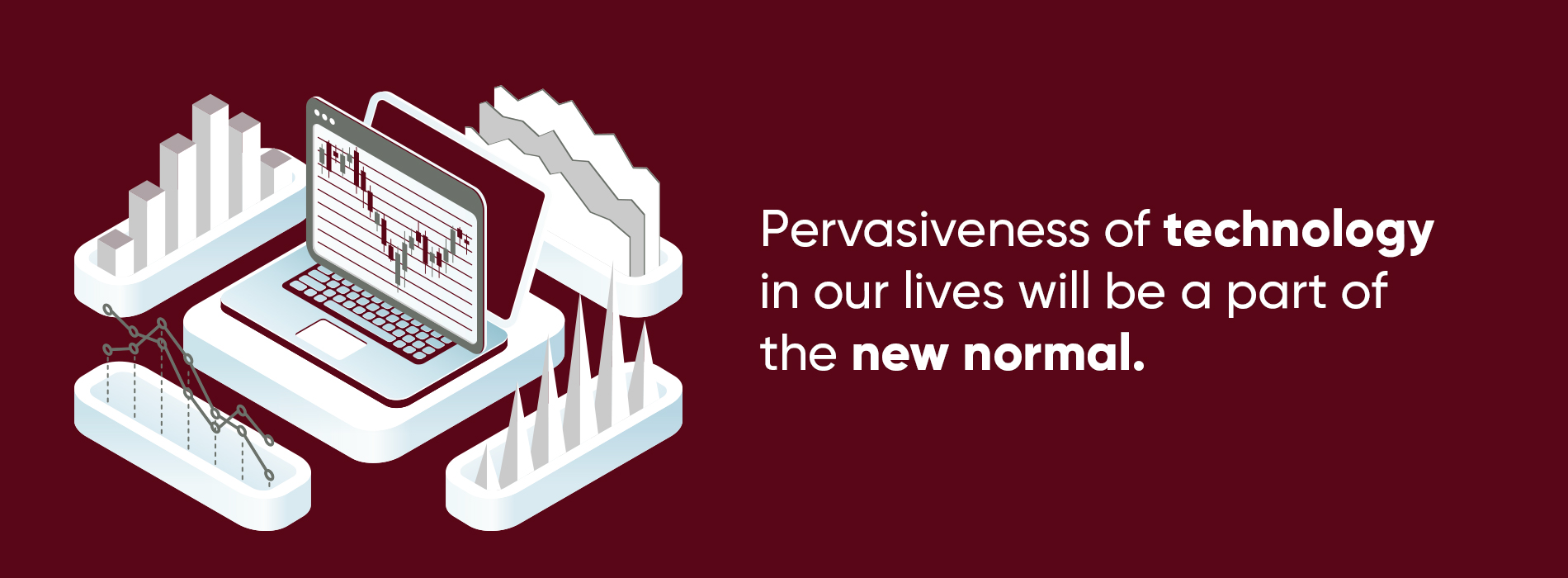 Technology has affected every aspect of being human: how we think and make decisions, how we feel, what we crave, and how we relate to others. Technology has created a new set of “problems” and emotional needs, new ways of acquiring perceptions of products and brands, and new ways of interacting with the marketplace. The hunt for happiness has evolved. This entire phenomenon will get a huge boost with the exigency of social and physical distancing and the consequent need thereby to depend on fintech, edtech, healthtech, foodtech, martech, web entertainment, et al.
Technology has affected every aspect of being human: how we think and make decisions, how we feel, what we crave, and how we relate to others. Technology has created a new set of “problems” and emotional needs, new ways of acquiring perceptions of products and brands, and new ways of interacting with the marketplace. The hunt for happiness has evolved. This entire phenomenon will get a huge boost with the exigency of social and physical distancing and the consequent need thereby to depend on fintech, edtech, healthtech, foodtech, martech, web entertainment, et al.
Five key psychological shifts catalyzed by our use of technology are of particular importance to how, when, and why people shop and buy, and this will further accelerate in the New Normal with immense technological dependence: Innovation optimism, consumer empowerment, faster ways of thinking, symbol power and new ways of connecting.
Going ahead with newer technologies, Google CEO said Artificial Intelligence is going to more imp than fire or electricity. Technologies like Affective computing or Emotion AI can bring in a paradigm shift in experience by combining data driven experiences embodying the latest techniques in Human Centered Design (HCD) inspiring deep emotional connections with products and brands, which in turn can drive loyalty and business growth.
On technology impact in the New Normal, one example is Jio Mart, the Jio’s new ecommerce platform: Jio and WhatsApp can empower 3 crores small India kirana shops to digitally transact with every customer in the neighbourhood.
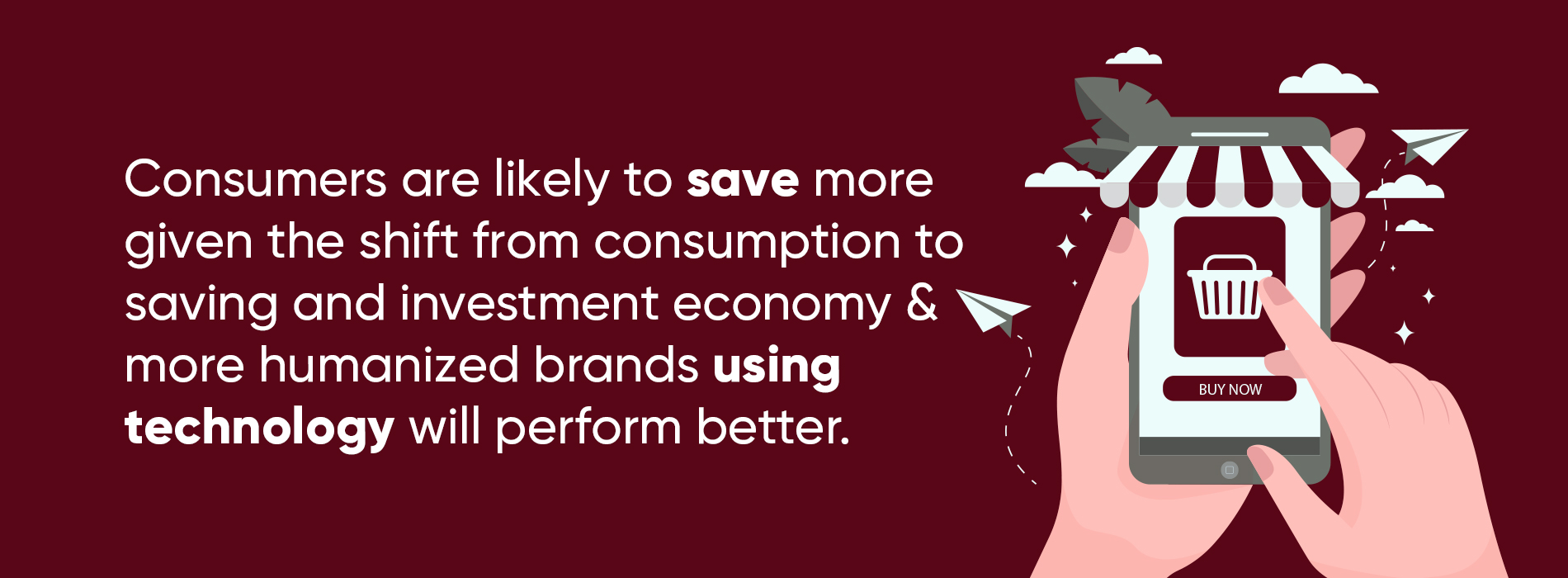 On consumer’s front, there is fear on the use of daily consumables like food items, groceries for reasons of safety and security. Some sectors like travel, tourism will have a total flip. The nature of products and services may require a complete overhaul.
On consumer’s front, there is fear on the use of daily consumables like food items, groceries for reasons of safety and security. Some sectors like travel, tourism will have a total flip. The nature of products and services may require a complete overhaul.
While big businesses continue to serve the public for good, small business run the risk of being out of market if they are not given enough sustenance and support, and may eventually die out. At present, what the marketers should be focusing on is not just surviving during crisis but maintaining consumers’ perceptions through successful positioning strategies for building and sustaining a credible brand image far beyond the crisis.
Compassion, subtlety, nuanced communication is the need of the hour now and ahead. Marketers need to conceptualize, define, develop, and deliver brands that masses can afford, buy, and get value from in terms of utility, satisfaction, and welfare. That would ideally be the harbinger and precursor for new normal that one witnesses in the post-COVID scenario.
Translated by THUONG HIEU VU | BOUTIQUE BRANDING AGENCY
Source: Adama Sun University
A THREE-POINT AGENDA FOR MARKETING SUCCESS IN THE COVID-19 ERA
As we marketers prepare for recovery, the top factors I invite marketing leaders to consider in 2021 are based on an unambiguous three-point agenda
2 ESSENTIAL FACTORS OF SUSTAINABLE MARKETING
From Thuong Hieu Vu's point of view, there are 2 essential factors that have the most impact, if you could implement it as it means your business is running on the right way.
HOW MANY LEVEL OF HAPPINESS AT WORKPLACE?
How many times have you met a mechanic or a contractor who came to fix the house, but at the time of payment, they begged you to go for a quality assessment, until you were satisfied with a smile, that person happily accepted? The difference here is the level of happiness at workplace. And the above contractor was the one who achieved the highest level of happiness.
WHAT IS CONTENT STRATEGY ?
Most people have wonders surrounding the so-called Content Strategy, even for those in the marketing industry.
BUSINESS GROWTH WITHOUT MARKETING ?
There is a problem, also known as a question: "Is there any business that does not need Marketing but still develops in the market?
FOUR MARKETING ACTIONS FOR NAVIGATING IN TROUBLED TIMES
In October of 1980, The Conference Board held a conference titled “Marketing Under Economic Adversity.” The title is apt for today as we may be facing years of economic uncertainty due to the current pandemic that has halted a large swath of the U.S. and global economies. A poll among 34 economists conducted by The Wall Street Journal indicates belief that we are facing a recession with the loss of $1.5 trillion in economic output.
TO CREATE YOUR PERSONAL BRAND- PART 1
Creating your personal brand is like creating a brand identity for a product or service with one big difference. In creating a brand identity, you can choose its name, values, and personality. When it comes to your personal brand, it’s all about you and your authenticity. That’s everything that you are, everything you aspire to be, and everything that people believe you to be.
11 TIPS TO GET YOUR BRAND LOVE
Why brand love is important? How does brand love benefit a company?
MINDFULNESS AT WORK
Everything is a miracle, an unfortunate thing is also a miracle of life, and the good thing is also a miracle of life. Gratitude to the things around us is magical
PURSUIT OF HAPPINESS
The American Declaration of Independence has the phrase "pursuit of happiness", which is one of the basic human rights, but surprisingly, Buddha said: "Not pursuing happiness is having happiness".
CPG MARKETING FOR GEN Z: NOT YOUR GRANDMOTHER'S MARKETING PLAYBOOK!
Instead, focus on building a coalition of enthusiasts to champion your products so long as they’re authentic, purpose-driven, and meet the Gen Z shopper where they are. This isn’t your grandmother’s marketing playbook.
WHY SMALL BUSSINESSES NEED An INTEGRATED MARKETING PLAN (IMC PLAN) ?
IMC - not an entirely new concept to medium and large enterprises, but for small businesses which newly start a business, form a team, and having to do a lot of work, is still a new thing.
LOVING WORDS AT WORK
It's great to say loving words to people instead of reproaches. Did you know that the energy of compassion and empathy always carries the energy of patience?
MANAGEMENT LESSONS - HOW TO GET CUSTOMER’S LOVE OF LOTTE SUPERMARKET
The online supermarket is the "clinging" place for urban housewives in the lockdown situation. Observing how supermarkets sell goods from the perspective of personal experience into sales management lessons and building brand love for customers.
WHAT IS BRAND STRATEGY ?
No one wants to resort their competitors by pricing strategy, so businesses often hear the phrase "brand strategy".
ENHANCE CONCENTRATION IN DISTRACTION ERA
Whenever we have feelings of rushing thoughts or unfocused thoughts, we lean on and observe our 3 mindful breaths, 3 questions asking ourselves what's going on, what we're feeling, what's the most important things right now?
THE RELATIONSHIP BETWEEN MUSIC AND ADVERTISING: 5 WAYS MUSIC ENHANCES COMMERCIALS
You turn on the radio and the first song you hear triggers a memory from your childhood, your first kiss or a great party. Music is scientifically linked to memory, bringing you right back to the moment when you were actually listening to the song.
PART 1: WHY IS TIKTOK?
We’ve gone from Facebook to YouTube and then IGTV and now, we’ve arrived in the age of TikTok.Once you get to know the app and exactly what you can do with it, you’ll find that it’s a great help with brand building.
TEN POINTS ROADMAP: MARKETING & BRANDING DURING & BEYOND COVID TIMES
We are in unforeseen times and no person alive on this planet has personally faced this situation unleashed by the nCOVID19 pandemic and the lockdowns announced globally thereafter. Hence, the response with regards to understanding consumer behaviour and responding with right marketing and branding strategies also have to be novel, experimental and nimble, changing as per the evolving situation.
PART 2: HOW TO USE TIKTOK EFFECTIVELY
At face value, TikTok may appear like it’s been made solely for fun and games. After all, it’s the go-to app for meme-making teens trying to go viral. But when brands venture onto this new social media platform, they can reap the rewards.
MARKETING THE ECO-FRIENDLY BRAND: DOES PRICE PLAY A SIGNIFICANT FACTOR?
Price is one of the most important issues when marketing for eco-friendly brands. Is premium pricing for eco-friendly products turn into a dead end?
COVID-ERA TRENDS THAT WILL HAVE A LASTING IMPACT ON THE PRODUCTS AND EXPERIENCES PEOPLE WANT
To say COVID restrictions lasting over a year has been challenging is an understatement. We see four trends that are enriching the B2C and B2B relationship, and evolving products and consumer experiences for the better.
FIVE MORE COVID-19 MARKETING TRENDS FOR ‘THE NEW NORMAL’ OF CONSTANT CHANGE
But despite the upheaval defining this most difficult year, brands are continuing to transform in real-time and lay the foundations for future growth (whenever that may be). Here are some key focus areas.
TO CREATE YOUR PERSONAL BRAND - PART 2
There are essentially 9 steps to follow to create, develop and maintain your personal brand. By getting your branding right, it will empower you as an individual, enable you to shine a spotlight on your expertise, and make you stand out from the crowd.
HOW TO CREATE YOUR PERSONAL BRAND - PART 2
Your brand’s visual identity will be the most powerful way to capture attention and build recognition as it delivers its message in the shortest possible time.
NINE COMMON MISTAKES PEOPLE MAKE WHEN BUILDING THEIR PERSONAL BRAND
Establishing a personal brand is something many professionals do to get noticed by the right people and make themselves available to the right opportunities. Unfortunately, with all the different information sources out there, it's easy to get confused about how exactly to do that. Where one source would advise you to do one thing, another article may recommend the complete opposite.
YOU WILL WORK DIRECTLY WITH FOUNDER OF VU BRANDING. ALWAYS.
LET'S WORK TOGETHER
call us at 0906611188 or email phuong.vu@thuonghieuvu.asia or please kindly share your project info. in the following form.
Contact usContact Us
Information
Our Address
41 - 47 Dong Du Street, Ben Nghe Ward, District 1, Ho Chi Minh City



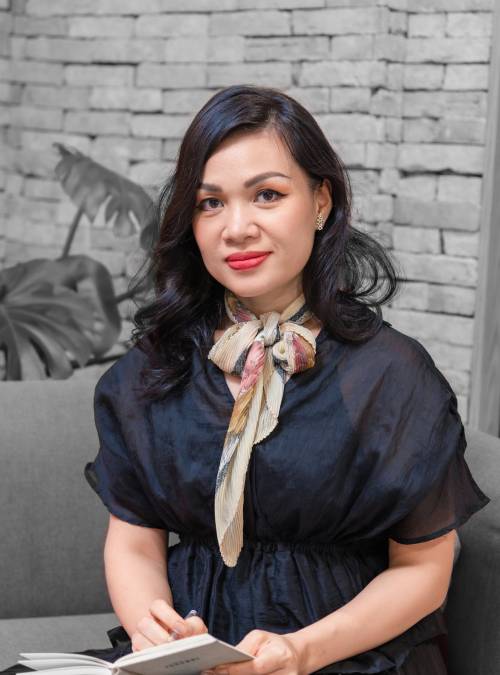

.jpg)


.png)

